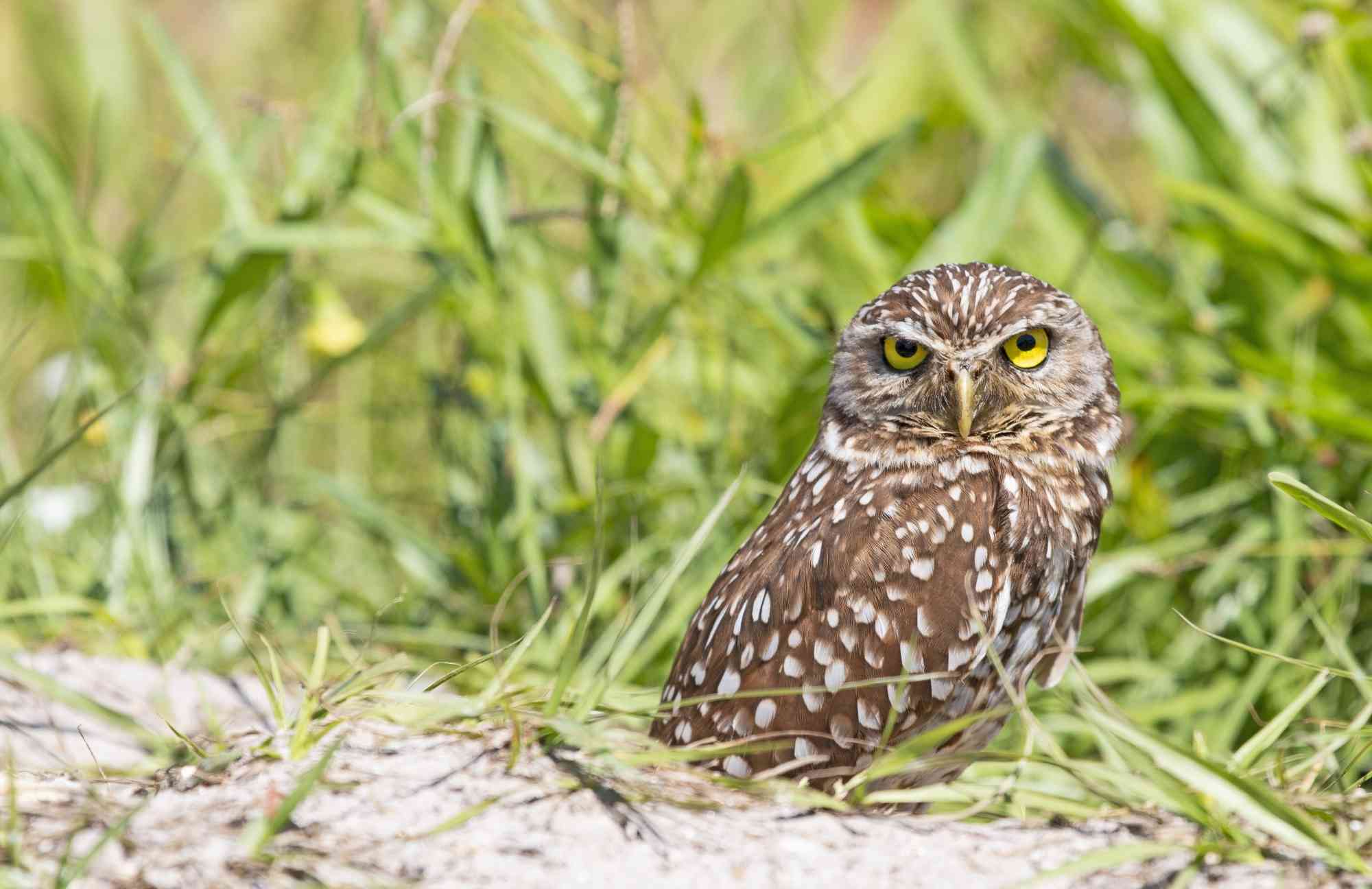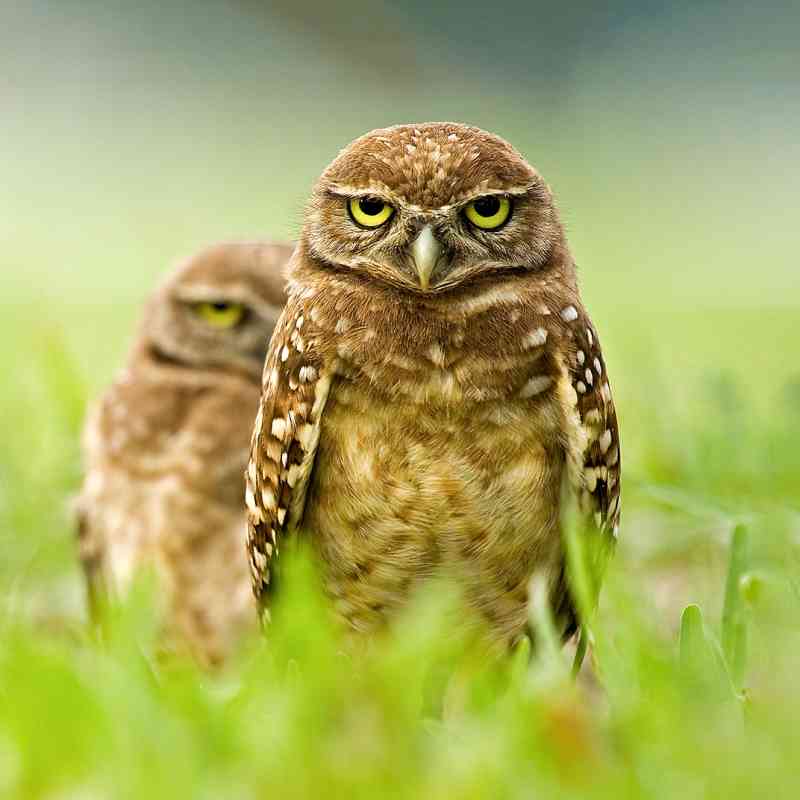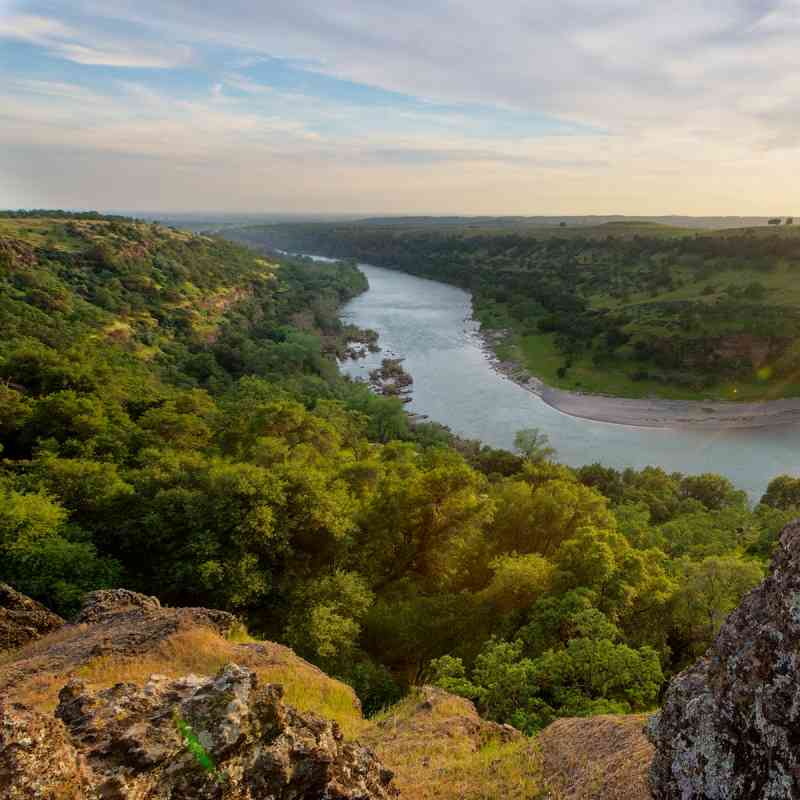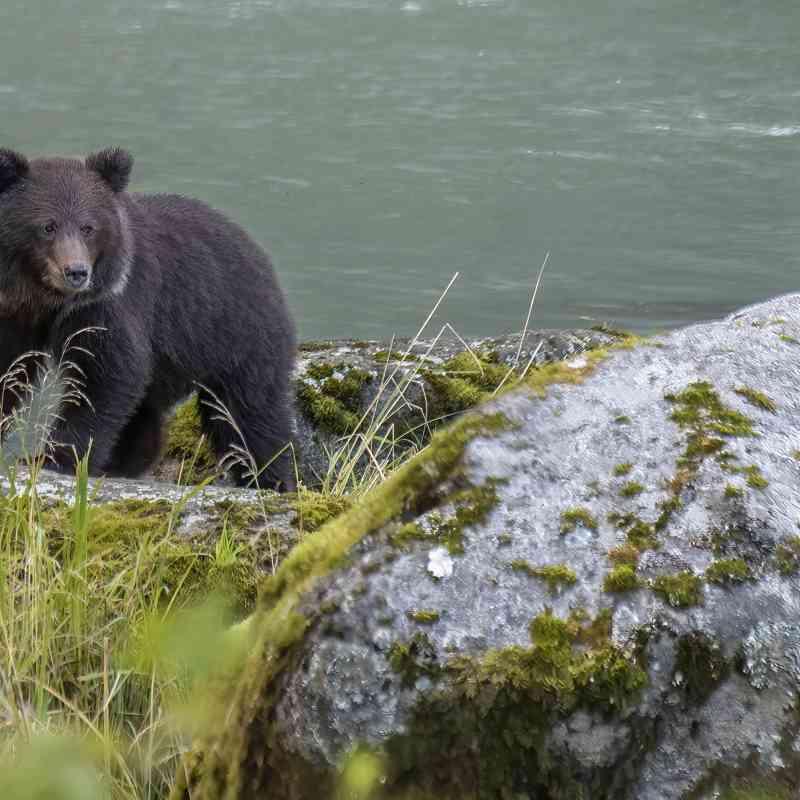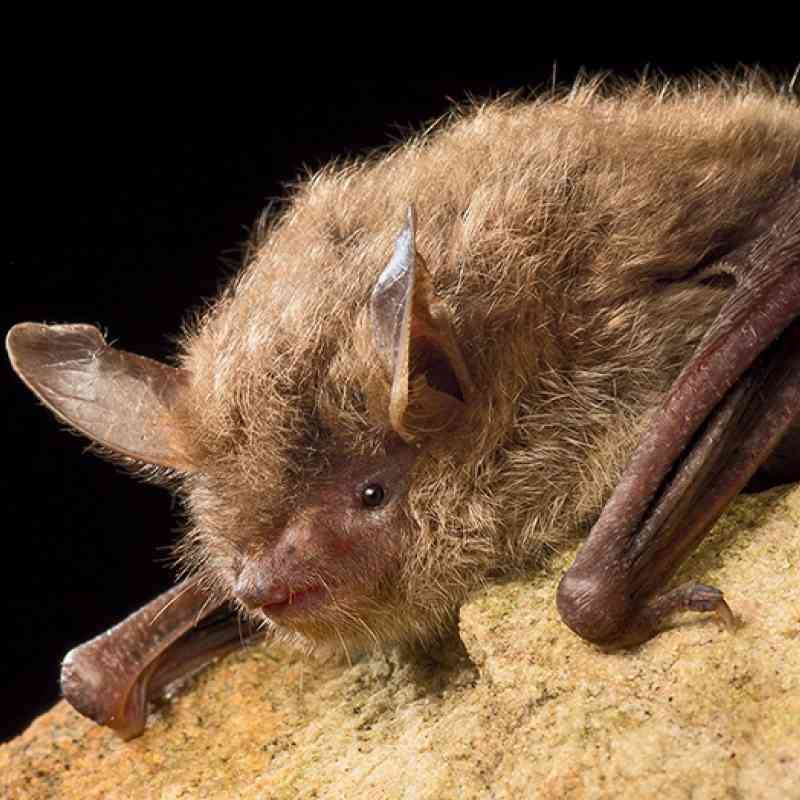Tweet“Increased renewable energy development to mitigate climate change impacts should not exacerbate the biodiversity crisis or come at the expense of thriving burrowing owl populations. Unfortunately, the existing policy framework has not proven adequate to protect these charismatic owls, so legal protections under the California Endangered Species Act are now urgently needed.”
Conservation groups petitioned the California Fish and Game Commission today to protect five imperiled populations of the western burrowing owl under the California Endangered Species Act.
The petition seeks endangered status for burrowing owls in southwestern California, central-western California and the San Francisco Bay Area, and threatened status for burrowing owls in the Central Valley and southern desert range.
“Increased renewable energy development to mitigate climate change impacts should not exacerbate the biodiversity crisis or come at the expense of thriving burrowing owl populations,” said Pamela Flick, California program director with Defenders of Wildlife. “Unfortunately, the existing policy framework has not proven adequate to protect these charismatic owls, so legal protections under the California Endangered Species Act are now urgently needed.”
The only owl species that nests and roosts underground, the burrowing owl was formerly widespread in California and commonly nested in grasslands throughout low elevation areas of the state. Burrowing owls have suffered significant habitat loss due to urban development, conversion of grasslands to agricultural lands, and large-scale wind and solar energy infrastructure. They are also killed by rodenticides and collisions with wind turbines and cars.
“These fascinating ground-dwelling owls need relief from being bulldozed or evicted to make way for urban sprawl,” said Jeff Miller, a senior conservation advocate at the Center for Biological Diversity. “I’ve witnessed the disappearance of burrowing owls from much of California over the past two decades, and it pains me to watch their extinction trajectory. They need immediate protections if we want to keep these owls around to grace our grasslands and open spaces.”
The owls rely on burrowing mammals such as ground squirrels to excavate underground burrows for nesting and roosting. Urban development removes suitable nesting and foraging habitat, while ground squirrels are routinely eradicated from ranching and agricultural lands.
“When a formerly common species disappears from our landscape, what does it say about the health of our ecosystems? Abundant burrowing owls once brought so much joy to residents of our valley, but development has pushed them to the brink of extinction,” said Shani Kleinhaus with Santa Clara Valley Audubon Society.
Protecting the burrowing owl under the California Endangered Species Act would require state and local agencies to manage threats. That would include ending the state policy of allowing owls to be evicted from lands slated for development and requiring adequate mitigation for habitat loss. Regional planning efforts, and in some cases direct intervention to boost owl abundance, are needed to prevent the imminent disappearance of burrowing owls from many areas of the state.
“State protections are urgently needed since the environmental review process hasn’t meaningfully protected or conserved burrowing owls,” said Catherine Portman with the Burrowing Owl Preservation Society. “We’ve tried to get mitigation for owl habitat destroyed by scores of development projects in Yolo County, but owl colonies are routinely evicted without requiring habitat protections. For example, 103 acres of prime burrowing owl breeding habitat in Yolo County were developed in 2015 in exchange for only 19.5 acres at a mitigation bank that has never hosted nesting owls.”
State policy allows burrowing owls to be “passively excluded” from breeding sites after nesting to accommodate urban development. Many evicted owls don’t survive and rarely do they successfully breed elsewhere. The practice pushes surviving owls onto more fragmented and marginal patches of habitat.
“In mere decades, California has seen the decimation of formerly thriving populations of burrowing owls, once one of the more common birds in California,” said Scott Artis with Urban Bird Foundation. “These unique underground owls, with a life history fine-tuned over millions of years, are now in a fight for survival and need increased state protections without delay.”
Some of the largest remaining burrowing owl populations in the state are facing significant mortality and habitat loss from industrial energy development, with large solar and wind projects killing and displacing scores of burrowing owls in California each year.
In addition to the Center for Biological Diversity, the petitioners include Defenders of Wildlife, Burrowing Owl Preservation Society, Santa Clara Valley Audubon Society, Urban Bird Foundation, Central Valley Bird Club and San Bernardino Valley Audubon Society.
Background
Burrowing owls have been eliminated as a breeding species from almost all of the California coast and are rapidly nearing localized extinction in the Bay Area, where fewer than 25 breeding pairs remain. Only about 225 breeding pairs are left in central-western and southwestern California. Burrowing owl numbers are also declining in the Central Valley, which has fewer than 1,500 breeding pairs, mostly in the southern Central Valley.
The state’s strongholds for the species are the Imperial Valley, which has an estimated 4,000 breeding pairs, and southern Central Valley with around 1,000 pairs. A formerly large population in the Altamont Pass area in eastern Alameda and Contra Costa counties is down to a few hundred pairs and rapidly declining.
Statewide surveys by the Institute for Bird Populations showed a 60% decline in California’s burrowing owl colonies from the 1980s to the early 1990s, and a further 11% decline in breeding pairs by 2007. Loss of breeding colonies has accelerated since 2015. Burrowing owls have been eliminated as a breeding species from at least 19 of the 51 California counties where they formerly occurred and are close to being wiped out in 10 other counties.
Contact:
Jacqueline Covey, Defenders of Wildlife, (202) 772-0287, jcovey@defenders.org
Jeff Miller, Center for Biological Diversity, (510) 499-9185, jmiller@biologicaldiversity.org
Scott Artis, Urban Bird Foundation, (925) 550-9208, scott@urbanbird.org
Shani Kleinhaus, Santa Clara Valley Audubon Society, (650) 868-2114, advocate@scvas.org
##
The Center for Biological Diversity is a national, nonprofit conservation organization with more than 1.7 million members and online activists dedicated to the protection of endangered species and wild places.
Defenders of Wildlife is dedicated to the protection of all native animals and plants in their natural communities, with a nationwide network of nearly 2.2 million members and activists.
Santa Clara Valley Audubon Society promotes the enjoyment, understanding, and protection of birds and other wildlife by engaging people of all ages in birding, education, and conservation.
Burrowing Owl Preservation Society works to increase California’s burrowing owl population through education and research and protection and enhancement of grassland habitat.
Urban Bird Foundation, founded in 2008 as the Burrowing Owl Conservation Network, tackles pressing conservation issues affecting burrowing owl and other bird populations in and surrounding neighborhoods, cities, and open spaces across the United States.
Central Valley Bird Club is dedicated to the study of the distribution, status, ecology, and conservation of birds in the Central Valley of California.
San Bernardino Valley Audubon Society strives to connect people to the natural world, focusing on birds and other wildlife to conserve natural resources in Southern California's Inland Empire in San Bernardino, Riverside, and Imperial Counties.
Defenders of Wildlife is celebrating 75 years of protecting all native animals and plants in their natural communities. With a nationwide network of nearly 2.2 million members and activists, Defenders of Wildlife is a leading advocate for innovative solutions to safeguard our wildlife heritage for generations to come. For more information, visit defenders.org/newsroom and follow us on Twitter @Defenders.
